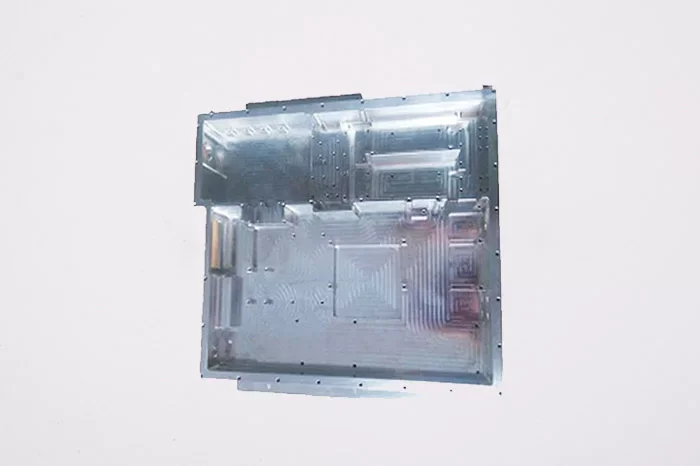Liquid cold plates provide local cooling of power electronic equipment by transferring heat from the equipment to a liquid that flows to a remote heat exchanger and dissipates into the environment or another liquid in a secondary cooling system.
The principle of water cooling is very simple, generally composed of water cooling plate, water pump, cold row, water pipe, water cooling liquid and fan. Because of its physical properties, water does not conduct heat better than metal, but flowing water has excellent thermal conductivity. That is to say, the heat dissipation performance of the water-cooled radiator is proportional to the flow rate of the cooling liquid, and the flow rate of the water-cooled liquid is related to the power of the water pump of the water-cooled system.
Working principle of aerospace water cooling plate radiator:
The water-cooled radiator conducts the heat of the heating source into the water-cooled liquid through the water-cooled plate, and the water-cooled liquid is circulated to the water-cooled row through the water pump, and a fan is used to dissipate heat and cool it down, and then circulates again. Moreover, the heat capacity of water is large, which makes the water-cooled refrigeration system have a good heat load capacity, and the direct benefit is that the working temperature curve of the heat source is very flat.
The heat capacity of water is large, which makes the water-cooled refrigeration system have a good heat load capacity. Equivalent to 5 times that of the air-cooled system, the direct benefit is that the working temperature curve of the heat source is very flat. For example, a system using an air-cooled radiator may experience thermal spikes in a short period of time when running a program with a large workload, or may exceed the warning temperature, while water-cooled cooling system has relatively much smaller thermal fluctuations due to its large heat capacity.
Factors affecting the heat dissipation performance of aerospace water cooling plate radiators:
The heat dissipation efficiency of the water-cooled radiator is mainly related to three factors. The first is the design of the water-cooled plate. The water-cooled plate is in direct contact with the heat source, and rapid heat conduction is very important. Generally, the water-cooled plate is made of aluminum in contact with the heat source, and a micro-channel is designed on the side that is in contact with the water-cooled night. This can not only increase the contact area, but also increase the flow rate, allowing the water cooling liquid to take away more heat. Different design of water channels will bring different heat dissipation effects.
The second is the head of the pump, which directly determines the speed of the water flow. Due to the physical properties of the water cooling liquid, the faster the flow rate, the better the thermal conductivity. Therefore, in order to quickly conduct heat to the water cooling row, the pump must have enough head. Finally, there is the design of the water cooling row and the fan. The current water-cooled radiator radiator is generally installed on the back of the case, directly cooled by a fan, and the water-cooled liquid in the radiator is cooled and recirculated.

Aerospace water cooling plate manufacturer
Professional aerospace water-cooling plate manufacturer-Changzhou Sanqian Technology Co., Ltd. specializes in the research and development, manufacturing, processing, production, and sales of various water-cooling plates. The company is fully equipped, advanced production technology, complete varieties, reliable quality, and reasonable prices.